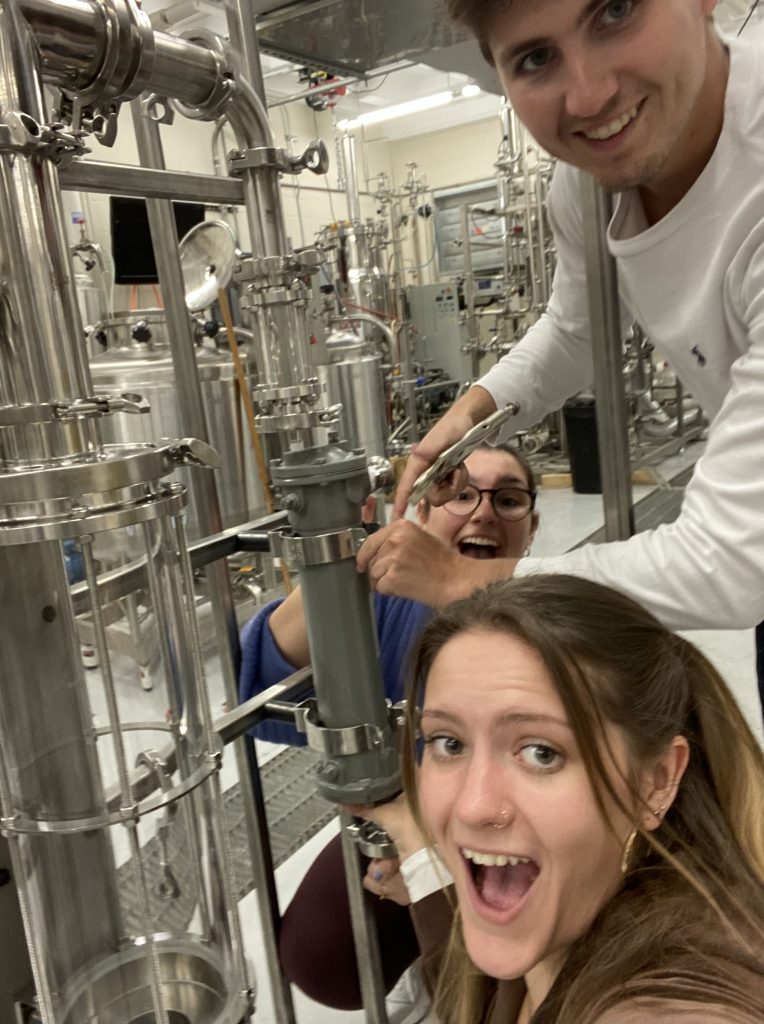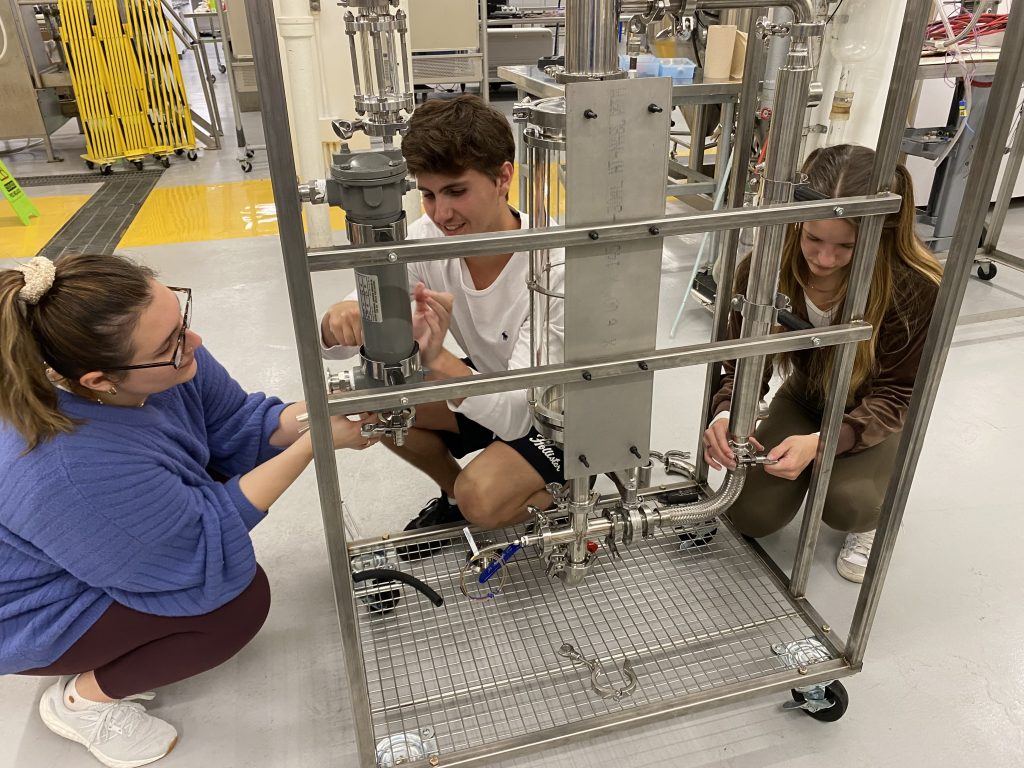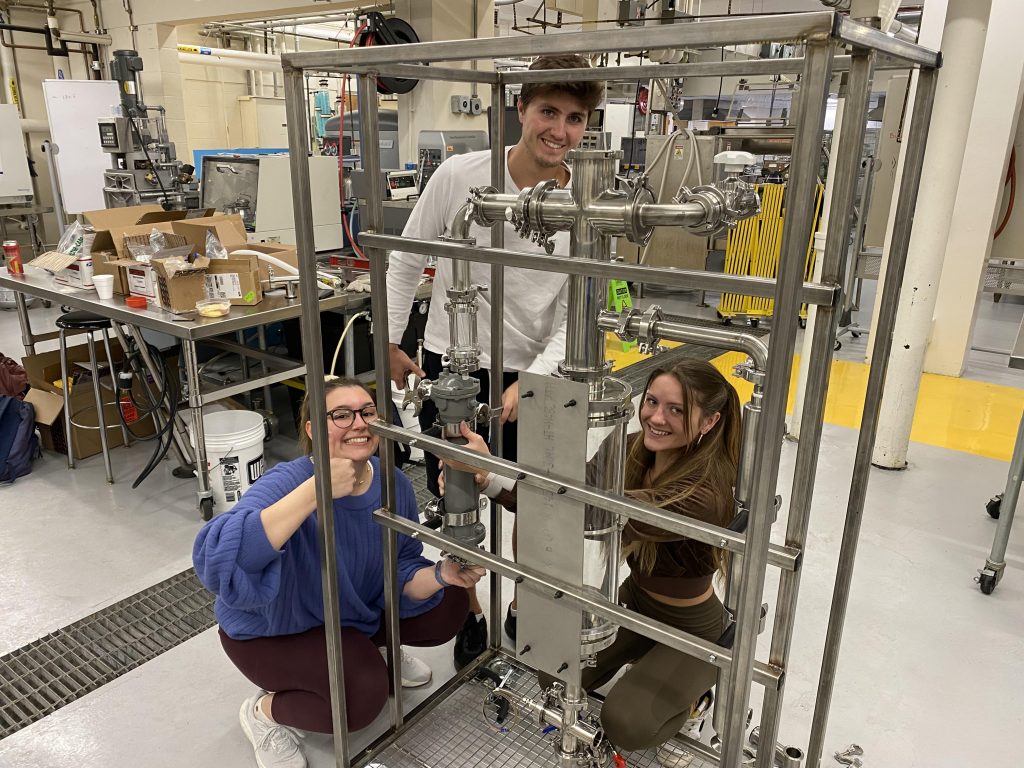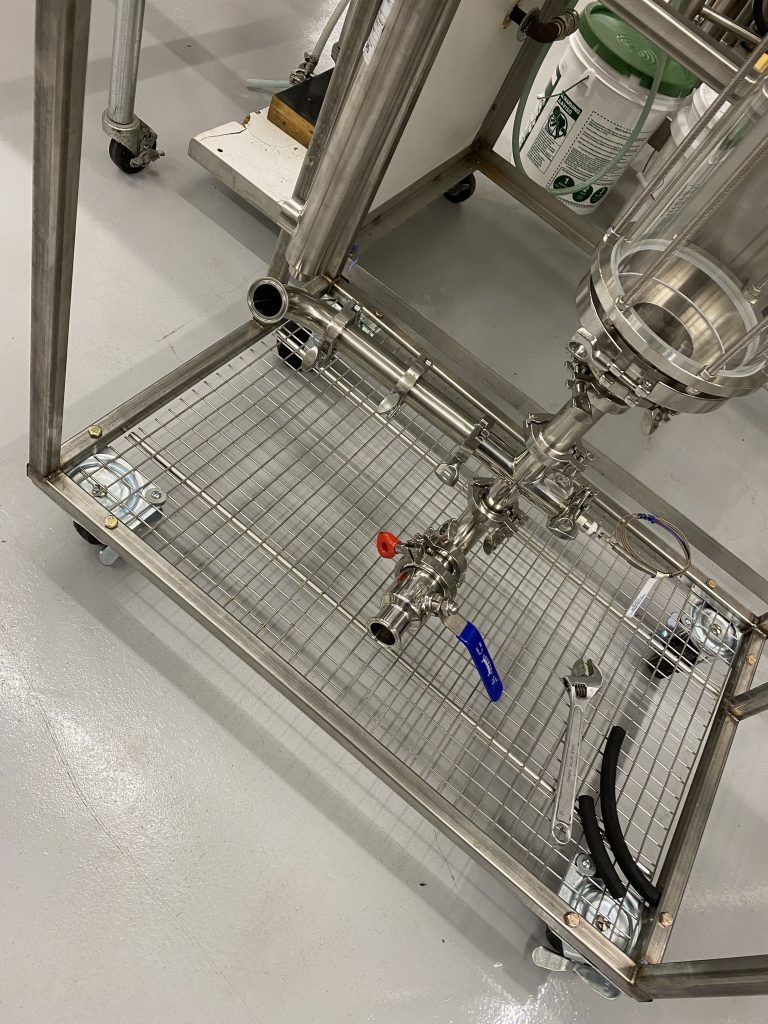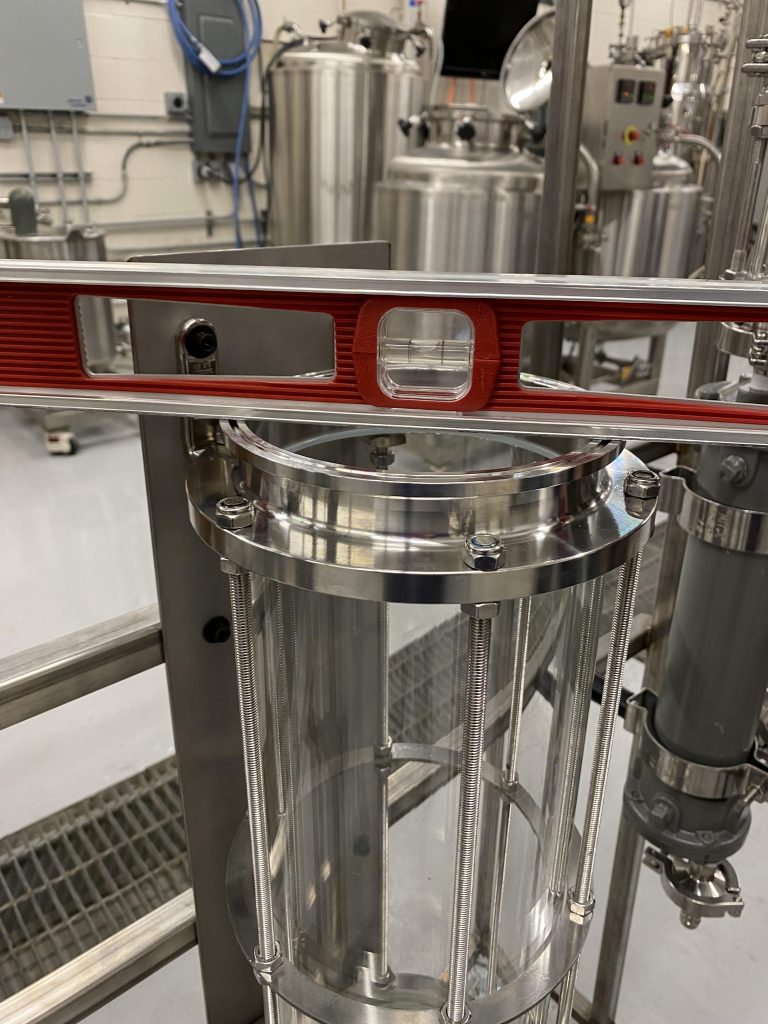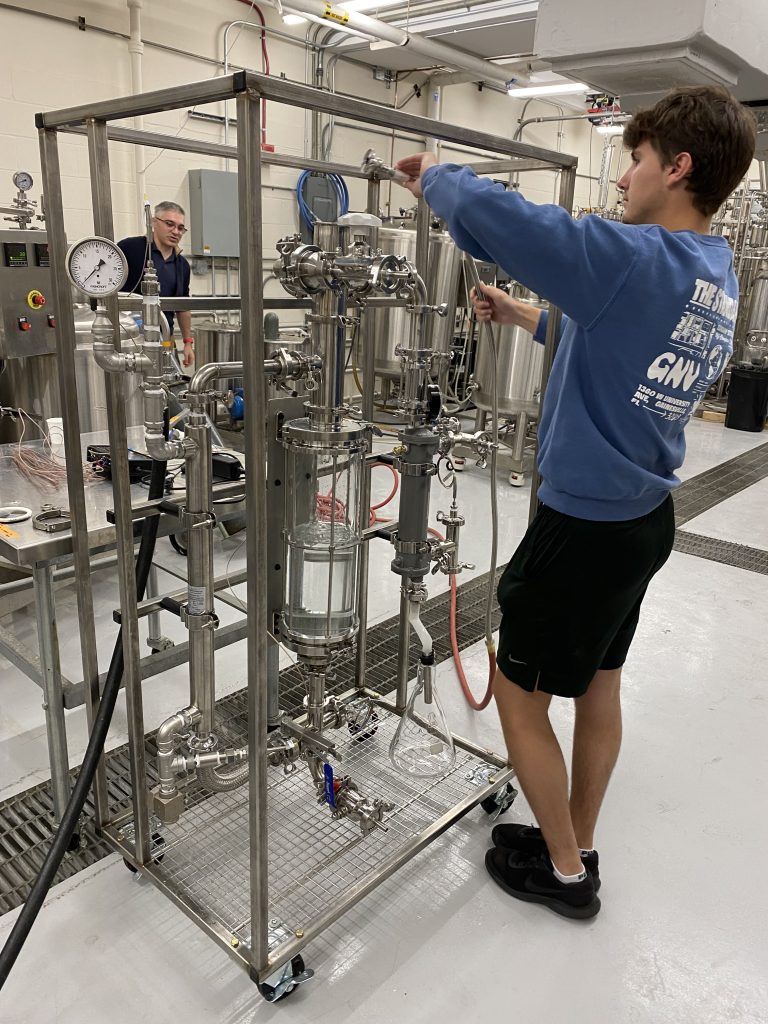Hello and welcome back, dear readers! First, the answer is to level, always. Second, EvapoGATOR feels refreshed after a nice break, and we dove right in this week!
Recently, our team has been preparing for Prototype Inspection Day (PID) on Tuesday, 3/28, where we will showcase our functional prototype to judges and receive feedback. During this event, we plan to present our vacuum evaporation system with an accompanying PowerPoint presentation and video demonstrating its functionality.
Oh yeah, so big update from the last two weeks — IT WORKS!!! We finished assembling the whole system (with 200+ individual parts) on Tuesday, 3/21, and spent the subsequent days testing it.
Okay, that’s the big news, but here are some other tasks we accomplished this week:
- added spacers behind the evaporator and condenser to fix alignment issues
- moved the evaporator + condenser up (y-direction) to help with alignment
- slightly reconfigured hex bolts + L brackets on threaded piping of phase separator to ensure it was level
- worked out many iterations of configuring piping that didn’t quite fit until they did
- connected all NPT parts with the addition of Teflon tape on threading
- received the Buchner flask + implemented a connection idea under the condenser
- added small hoses and hose clamps to the steam trap (evaporator outlet) and tri-clover tee (condenser outlet)
- began initial full system testing
- tightened NPT components to address leakage during testing
- tested 5 thermocouples on the system
We learned many things from assembling and testing the system this week. Adding the spacers helped with most of the alignment issues, but we still had to tinker with the parts to form different configurations until it all fit. We centered the entire design around the phase separator tank in the middle, so once we ensured that piece was properly aligned, most other assemblies fell into place.
It was funny because all of EvapoGATOR had a kind of moment of silence when we finally finished assembling the system to stand back and be like, “Dang, we did that!” It has been extremely satisfying to see that our countless hours of reverse engineering, researching, designing, planning, purchasing, and building have produced such a beautiful system. It has been very rewarding to see all the hard work come to life through our system.
Even though the system is assembled, it’s not quite finished yet! We began testing its functionality on Wednesday by filling the phase separator with water, connecting the steam line to the evaporator, and connecting the cold water utility line to the condenser. This allowed us to check for leaks and observe the heat exchange capabilities of the evaporator and condenser. The exciting thing is that both HEXs were functioning as intended, but we realized that we needed to optimize the heat transfer taking place in the evaporator. Additionally, we found some leaks in the system and took steps to fix those.
The biggest lesson EvapoGATOR learned this week is that, in engineering, things rarely work exactly how you want them to the first time. We had to go through the tedious process of fixing some problems whose solutions created other problems until all issues had adequate solutions. It’s interesting because, in most classes, there’s a clear right answer to every problem, but in real-life engineering, there are usually multiple solutions to the same problem, and you have to weigh all the factors to decide which will work most effectively for your project goals.
Okay, anyway, I’m done with my senior year, nostalgic, full-circle moments (for now). We made some great progress this week, and here are some tasks we plan to accomplish next week:
- present our functional prototype to judges during PID + ask for feedback
- source, purchase, and insert 3 small (diameter) tubes into the evaporator to improve natural circulation
- source, purchase, and begin design/manufacturing of labels for the system
- source, purchase, and begin manufacturing tray for thermocouple reader
- coat NPT parts with a pipe thread compound to create a leakproof seal
- order/receive a replacement of the broken thermocouple from McMaster-Carr
- update a draft of the lab manual for the system
- create a draft of a survey for students to fill out after testing the system
- continue testing the system + complete evaporation lab
- start planning labs with FSHN grad/undergrad students
Finally, please enjoy pictures of assembly and testing this week. We’re not including a picture of the fully assembled vacuum evaporation system yet though — gotta keep the suspense somehow. See you next week for more exciting updates!
